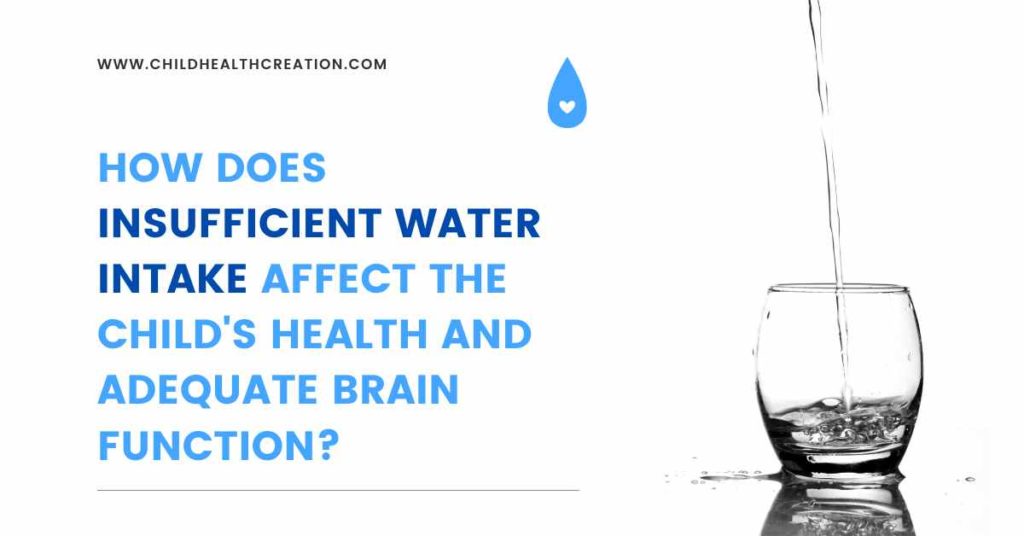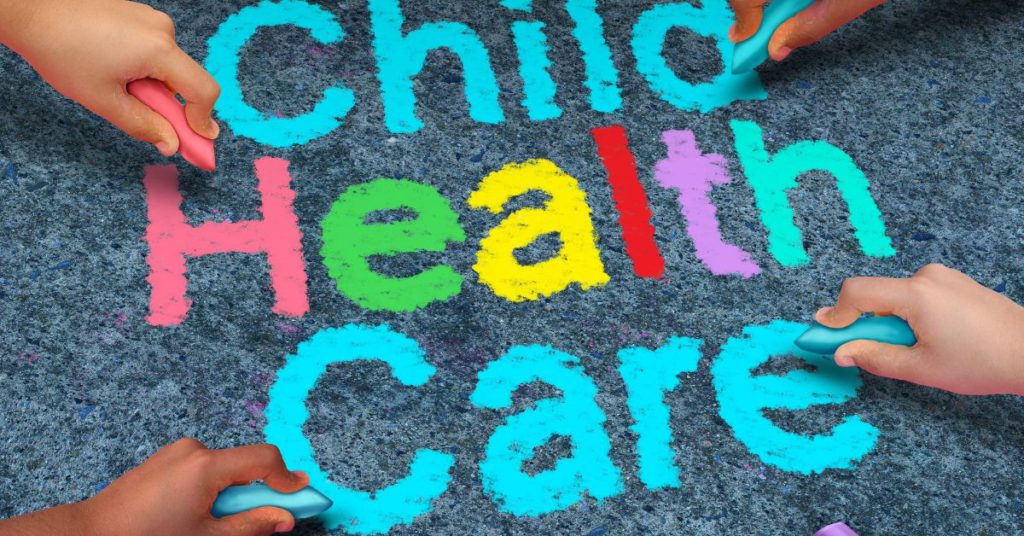In this article, you will learn:
- The water balance of the body is an important element in the healthy development of the child and his performance.
- Why is pure water important, and how to teach a child to observe the correct drinking regimen?
- School-based behavioral and environmental intervention to increase water consumption among children.
Table of Contents
How is water essential for our body and brain function? Insufficient Water Intake
Water is vital, with its participation, all metabolic and enzymatic processes take place. Moreover, in the body of a child, the relative content of water is greater than that of an adult. In a newborn, water is 80%, and in an adult body, water accounts for only 60% of body weight.
Of the water that enters the body during the day, 59% is excreted by the kidneys, 33% by the lungs and skin, and 6% of the liquid received by the intestines. Every hour, from 20 to 100 ml of water evaporates from the body’s surface. You can compensate for all these losses if you choose the right drinking regimen.
Water regulates metabolism and plays a key role in the formation of a child’s body and strengthening immunity: it participates in all chemical reactions and helps to deliver vitamins, micro, and macro elements, as well as other nutrients so necessary for the growth of a child. Clean water affects the concentration of attention and brain function because with the loss of only 2% of the total mass of water in the body, the mental and physical performance of the child is reduced by 20%.
A child’s recommended daily fluid intake!
The baby receives the required amount of fluid from breast milk, which is 88% water, so a healthy baby has a healthy breastfeeding mother before the introduction of complementary foods may does without water. An exception is considered to be situations when it is hot outside, or your baby is sick. If the child is bottle-fed, then it is necessary to drink water to remove toxins from the body formed when using a food fusion that has a high density compared to breast milk.
The need for water in the first weeks of life is 150-200 ml per day. Liquids such as boiled water or 5% glucose are offered between feedings, after walking and bathing.
From 3-4 months of life, the rate of fluid intake is calculated as follows:
50 ml per kg of weight.
This amount may already include not only water, but tea and a juice drink, later homemade compotes and fruit drinks are included in the liquid regime.
What water is better to drink?
Water contains many substances and compounds: a complex composition with many different components. It contains calcium, magnesium, potassium, phosphorus, chlorides, and sulfates, and inclusions of copper and zinc – useful trace elements for active growth and harmonious development! The best way to replenish the water balance of children is purified natural water, balanced in minerals and trace elements. At the same time, it is important that cleaning methods, on the one hand, guarantee quality and safety and, on the other hand, be so gentle to preserve all the natural properties of the product.
Children’s drinking water should be mild, low mineral (250 mg/l) and, silver-free, non-carbonated. The hardness (milligrams of Calcium carbonate equivalent per liter) of children’s water should be no more than 75 mg/L and 50 mg/L, respectively. It is possible to purify water, making it suitable for baby food at home. The smart alternative to buying water is using various household filters.
To lessen this chance, parents can use low-fluoride bottled water sometimes to mix infant formula; these bottled waters are labeled as de-ionized, purified, demineralized, or distilled, and without any fluoride added after purification treatment. Baby water, also sometimes called nursery water, is bottled water packaged and manufactured explicitly for babies, and it is similar to regular bottled water. You can use also tap water from the kitchen tap and boil it.
Avoid using alkaline water to mix baby formula feed or any other baby foods.
Children are extremely sensitive in the first months of life, and changes in their bodies (especially dehydration) occur very quickly. In particular, overheating, overwork, prolonged diarrhea, or frequent vomiting lead to water loss.
Why is water essential for children’s health? Why is dehydration dangerous in children?
Children do not always immediately feel thirsty or losing fluid. Your child may feel tired, lethargic, dizzy, and nauseous.
Dehydration not only makes you feel bad, but it also affects your academic performance.With the loss of a significant amount of water, the body temperature rises, including the brain. The concentration of attention decreases, short-term memory worsens, and absent-mindedness and nervousness occur. Children suffering from dehydration are often restless and interfere with classmates and teachers during the lesson.
The fact is that babies have much more water than adults. Therefore, it is important to know how to give a child a drink and how much liquid he needs.
Plain water is essential for brain function, alertness, concentration, learning ability, growth, and vitality.
But access to fresh drinking water in many schools is very limited and often inexistent.
This is a problem. At least half of a child´s recommended daily water intake must be consumed during school hours.
Chronic dehydration in children leads to diseases of the kidneys and digestive system and vegetative-vascular disorders. Therefore, special attention should be paid to the drinking regimen of children: make sure that the child replenishes the lost fluid and that the temperature in the room and the child’s clothes correspond to the weather conditions and what he is doing.
Sugary drinks and obesity
Increased ingestion of sugary drinks has been linked to childhood obesity. Many children come back home under-hydrated after long hours at school with nothing (or very little) to drink.
Childhood obesity is a serious public health challenge. Consumption of sugar-sweetened beverages (SSBs) instead of water is one contributing factor, with adolescents being the highest consumers.
School-based behavioral intervention and environmental intervention to increase water consumption among children.
Australian researchers completed a study in secondary schools to determine the effectiveness of a school-based behavioral intervention (including education/promotional messages) and environmental intervention (chilled water station) in encouraging adolescents to choose water instead of SSBs.
The combined intervention had a greater effect on decreasing SSBs consumption. The study findings add to the evidence regarding the benefits of delivering multicomponent school-based interventions, which add value to existing interventions that address the complex public health issue of overweight and obesity (Gowland-Ella J, Batchelor S, David M, Lewis P, Kajons N. The outcomes of Thirsty? Choose Water. Health Promot J Austr. 2022 May 30. doi: 10.1002/hpja.623. Epub ahead of print. PMID: 35637595).
Be sure to provide children with free access to drinking water. Therefore, many schools are thinking about installing drinking fountains or dispensers.
Researchers from the USA revealed that: More than 50% of all children and adolescents are under-hydrated and need to drink more water. Boys are 76% more likely to be dehydrated than girls. 25% of children didn’t drink plain water at all (Harvard T.H. Chan School of Public Health, 2015).
In the UK study involving 104 schools: 35 didn’t have a drinking fountain. When school children drink directly from a water fountain, they may get a couple of sips (2 oz., or 55 ml) – compared to 150 ml from a cup. When water is promoted and cups are provided by schools: more students drink water, students drink more water, and fewer students have sugary drinks.
Practical recommendations: How to teach your child to drink properly?
- It is necessary to teach the child the right habits from the moment of birth, and then it is not necessary to retrain him: do not give the child sugary drinks such as cola, sprite, lemonade, etc. Just offer him clean water. By doing this, you will bring up its taste qualities, and pure water will always be the most delicious and healthy drink for a child.
Despite the fact that water is vital, children rarely choose pure water over unhealthy sugary drinks (juices, soda, etc.). However, there are ways to get your child to drink water regularly.
- Take care of the availability of water:
Ensure the child always has the opportunity to drink water during the day. Put water in a prominent place: on the bedside table, in the children’s room, or in the kitchen. Give your child a bottle of water with you – the 0.33 format will be convenient to carry even for a child.
- Get their attention with bright packaging:
Bright packaging with favorites attracts even those children who previously did not like to drink water, preferring sugary drinks that could be healthier. For example, the “Holy Spring” with characters from the legendary Star Wars saga, the movie “Frozen” or MARVEL superheroes is not only a toy but also an argument that helps parents convince a child to choose pure drinking water.
- Celebrate your child’s drinking achievements:
This is because the child moves a lot during the day and spends a large amount of energy and, accordingly, fluid. Keep track of how much water your baby has drunk – any scale will do for this: a diary, a mobile application, etc. Turn it into a competition. It is very convenient to consider “achievements” as bottles. An individual rate, taking into account the activity of the child, can be calculated using a special calculator.
- Set an example for your child:
Children always copy the actions of their parents; this also applies to the right habits. If the child sees that you lead a healthy lifestyle and drink water regularly, he will also be happy to maintain water balance.
Resume
- What are some of the adverse effects of inadequate hydration in children? – It can lead to impaired cognitive and emotional functions. What are some of the adverse effects of “mild” dehydration? – Headaches, Irritability, poorer physical performance, reduced cognitive functioning, Inability to concentrate.
- Hydrating with water is a much better option. Plain water is essential to brain function, alertness, concentration, learning, growth, and vitality.
- Increased ingestion of sugary drinks has been linked to childhood obesity. Many children come back home under-hydrated after long hours at school with nothing (or very little) to drink. At least half of a child’s recommended daily fluid intake must be consumed during school hours.
- Take care of the availability of water: ensure that the child always has the opportunity to drink water during the day.
- Make an effort to teach your child healthy habits: drinking pure water instead of sugar-sweetened beverages.
- When water is promoted and cups are provided by schools: more children and students drink water, students drink more water, and fewer students have sugary drinks.
- Children must have adequate access to free drinking water at home and schools, so parents and teachers can help do something about it: a water fountain or chilled water station.
- Dehydration at schools is just unacceptable. Everyone should get involved in this initiative!
Kew words: water intake, dehydration, water station at school, sugary drinks, sugar-sweetened beverages (SSBs), childhood obesity, healthy habits, daily fluid intake
If you liked this article, please share and leave your comment below!





